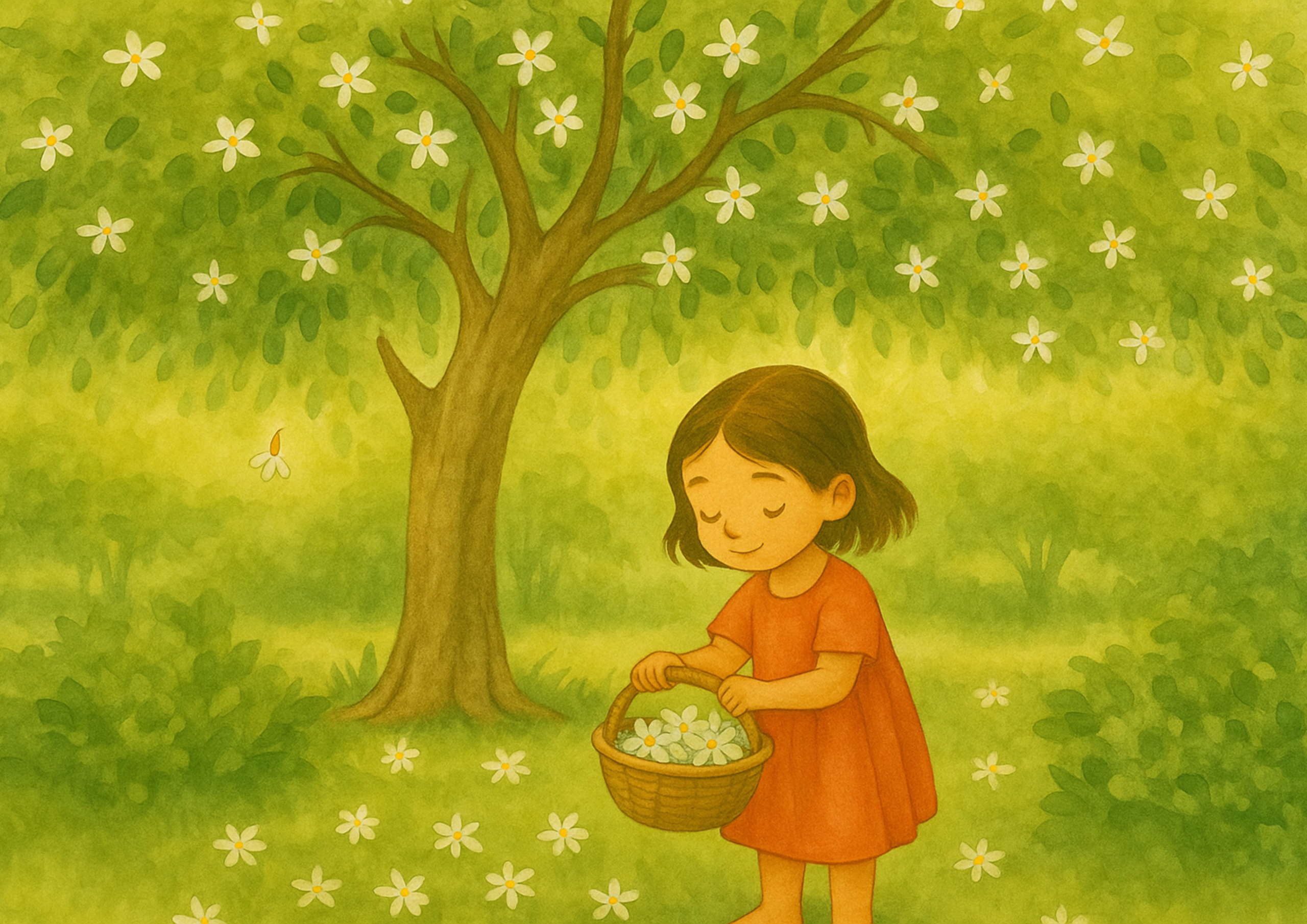🌸 Parijaat – The Tree That Smells Like Childhood
“Some trees grow near your home, some grow in your memory forever. 🌸 Here’s a little piece of my childhood, wrapped in Parijaat petals. #Nostalgia #Parijaat #IndianFlora”
The Parijaat tree has always held a magical place in my heart. Every time I see it bloom or get a whiff of its delicate fragrance, I’m instantly transported back to my childhood.
There used to be a Parijaat tree near our purana ghar. Every morning, it would lay out a soft, white carpet of its chote chote sunder phool — white petals with a vibrant orange stem — right at its feet. I would grab my favourite little basket and rush out early, hoping to gather the flowers before anyone else could. If I got late, most of the flowers would already be gone, picked by others who loved them just as much.
But the carpet was never enough for me.
What I loved the most was standing beneath the tree, eyes closed, and gently shaking its slender branches. The Parijaat has soft, lightweight stems, and with just a little nudge, it showers you with its tiny blooms. I still remember the feeling — the cool touch of petals on my face, the sweet fragrance wrapping around me, and that brief moment of pure joy.
Its leaves are a light, soothing green, and the contrast of dainty white flowers nestled in the green foliage is simply breathtaking. But even more mesmerising is the sight in the early morning — the entire ground beneath the tree covered in fragrant blossoms, like nature’s own rangoli.
After collecting the flowers, I would offer some in the mandir, and place the rest in a bowl of water at home. The gentle scent of Parijaat would then fill the entire house — calming, pure, and comforting.
Even today, when I come across a Parijaat tree or breathe in its fragrance, I’m that little girl again — with a basket in hand, eyes closed, and heart full.
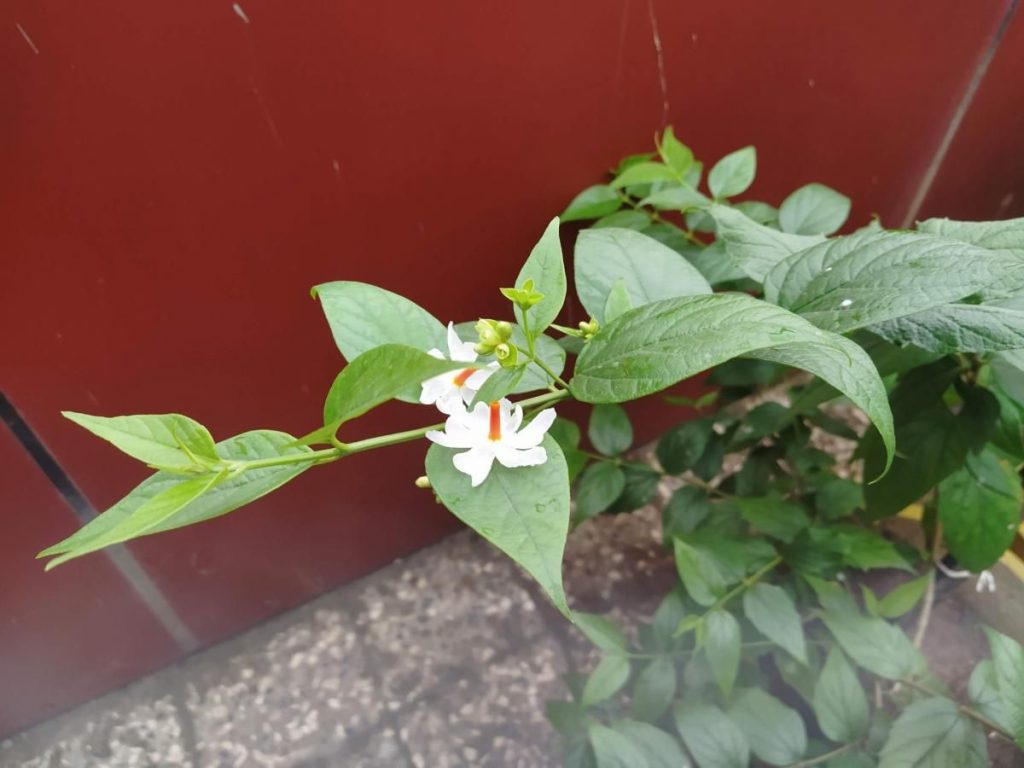
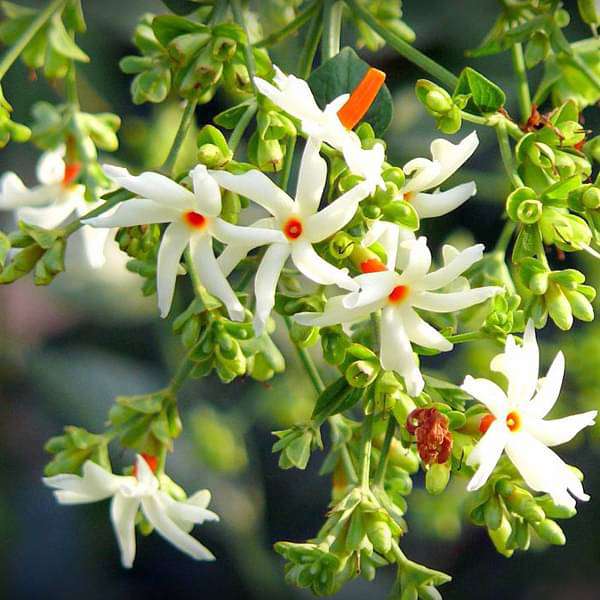
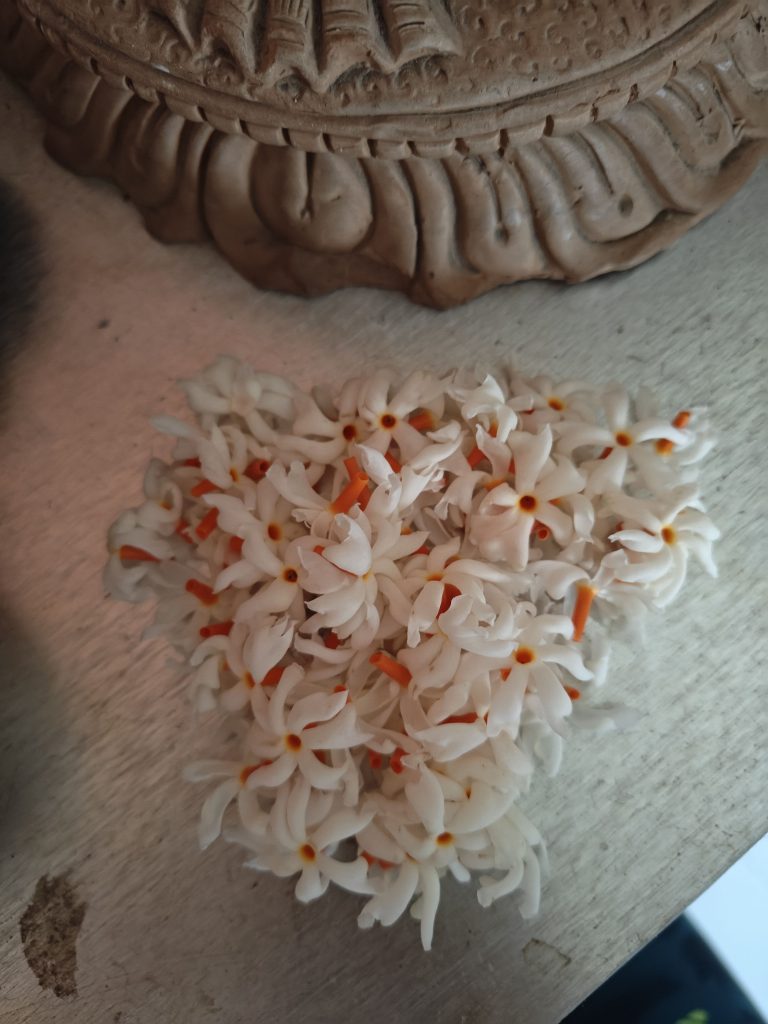
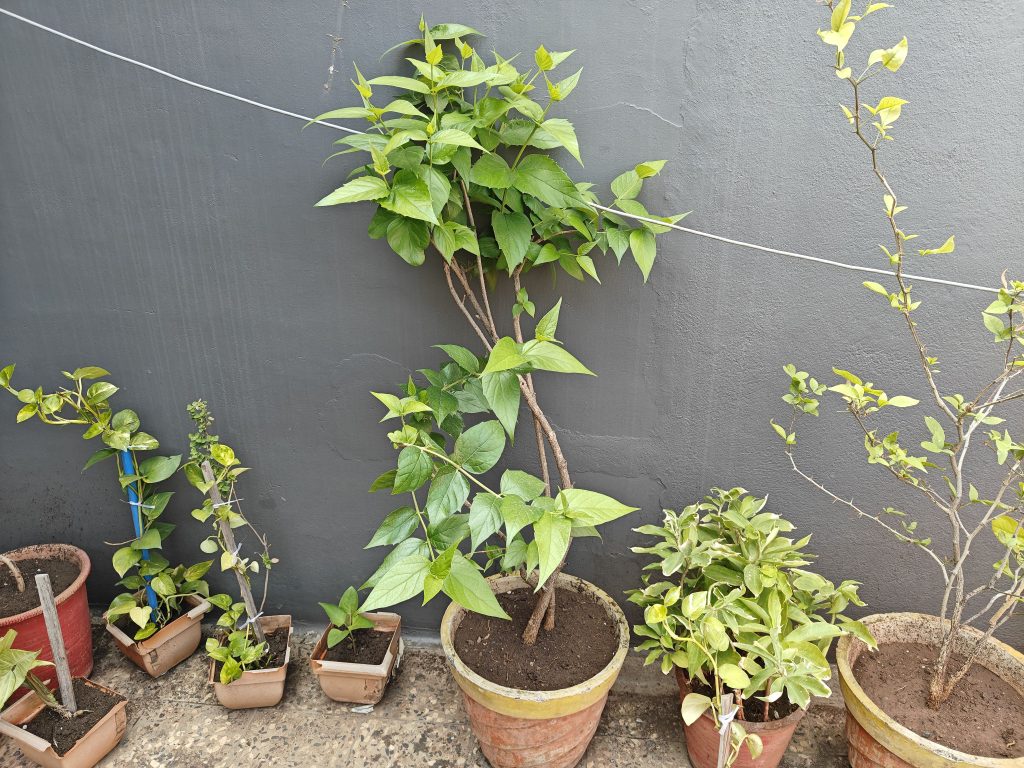
✨ Mythology & Significance of the Parijaat Tree
The Parijaat tree — also known as Harsingar or Night-flowering Jasmine — holds a special place not only in nature but also in Indian mythology.
According to legends, the Parijaat tree emerged during the Samudra Manthan (churning of the ocean) and was brought from the heavens to Earth by Lord Krishna. It is said that he planted the divine tree in the garden of his beloved Queen Satyabhama. But to keep harmony, the flowers — fragrant and divine — would mysteriously fall in the courtyard of his other queen, Rukmini. In this way, Krishna ensured that both his queens shared in the blessing of the celestial tree.
The tree is considered sacred and is often associated with love, devotion, and spiritual purity.
Parijaat flowers are used in prayers and rituals, especially for Lord Shiva and Vishnu. Despite their delicate beauty, these flowers do not grow into garlands — they are offered fresh, as they fall — just like blessings from above.
I’ve planted a Parijaat plant in a pot at home — a small attempt to hold on to that magic. But it doesn’t bloom the way it did back then. Just two or three flowers a year, as if it too is longing for that old tree, that old house, and those carefree mornings.
“The Parijaat may not bloom near me anymore, but it still blossoms in my heart. A tree from the heavens, a fragrance from childhood!”

